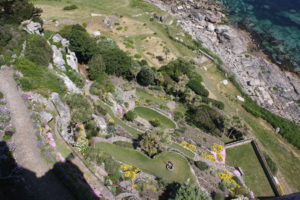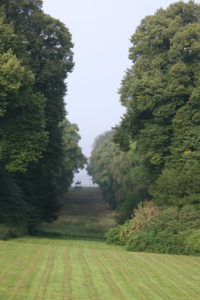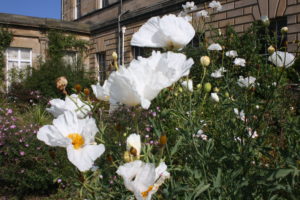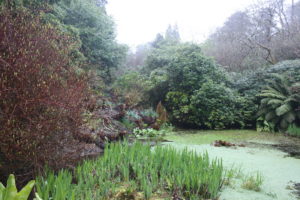23 June 2016
Double Yellow
by J.R.Thomas
 According to the nature notes of a well known country magazine, this week is the traditional time for fledglings to leave their nests and to take to the air. And who can blame them; balmy sunny days, summer horseracing at full peak, Wimbledon about to begin (for the more suburban type of bird), and endless fat grubs and insects in the sunlit borders, everywhere a hungry bird might look. And English gardens at their absolute peak ; for a young bird not only bounteous beauty and fascinating scents, but lots of warm dry places to hide from predators both air-borne and ground-hugging.
According to the nature notes of a well known country magazine, this week is the traditional time for fledglings to leave their nests and to take to the air. And who can blame them; balmy sunny days, summer horseracing at full peak, Wimbledon about to begin (for the more suburban type of bird), and endless fat grubs and insects in the sunlit borders, everywhere a hungry bird might look. And English gardens at their absolute peak ; for a young bird not only bounteous beauty and fascinating scents, but lots of warm dry places to hide from predators both air-borne and ground-hugging.
You may well think your correspondent needs to get out more if this is what he thinks the summer of 2016 looks like. Like every year for the last goodness knows how many, it feels as if a wet spring has shaded into a very wet summer. Our memories are short, but the overall impression of the advent of global warming seems to be increasingly wet summers.
But your correspondent does in fact get out quite a bit, and there is little he enjoys more than a Sunday afternoon snoop round somebody else’s garden (always better than irritable toil in your own). And the average June garden has been getting better and better for several years. Not only is it the time when those baby birds are leaving their nests, it is also the time that gardens are reaching their peak glories, and that the flush of garden openings reaches its peak. There are of course plenty of country house and National Trust gardens which open on a regular and frequent basis, very professionally, with gift shops, tea rooms, art galleries, and often a stately home to make your day full and rewarding (and impoverishing). But, at this time of year, go yellow. Buy yourself a copy of the yellow book, and set your wheels towards the country and one of the yellow book’s special gardens.

The yellow book; it should be The Yellow Book, great an institution as it is, is a gazetter of 3,800 private gardens open to the public this year. These are, in the nicest sense, amateur gardens, many of the most remarkably high standard and appeal, and many of them cottage gardens, mixed in with ones appended to stately homes, or suburban semis. Most of them open for just one or two days a year. They are often entirely created and looked after by their owners, without help, and all proceeds of opening – £3m last year – go to charities, a range led by McMillan Cancer Support and all devoted to nursing care for the sick. The National Gardens Scheme, which organises all this, began in 1927, so this is its 89th year of operation. On its 75th anniversary the NGS reported that some 40 gardens had opened every year since the inception of the scheme, and a flick through the yellow book suggests that a good number of those should make it to ninety years next year.

The NGS is a wonderfully British concept (though Scotland has its own, similar, scheme). Its Patron is the nation’s gardener in chief, the Prince of Wales, and the president is the nation’s cake maker in chief, Mary Berry. Chief Executive is George Plumptre, scion of Goodneston Park in Kent, one of England’s greatest gardens, and a leading garden writer. Its national committee and its county committees are wonderfully composed of a mixture of the great and the humble, united by a common urge to help charities by sharing their gardens, and working very hard indeed to make sure they do so to their utmost.
In June there are over 200 gardens open every weekend, so there really is something for everybody to visit – and London, for those Shaw Sheet readers confined to town, figures strongly. Your correspondent, straining every sinew, has counted and advises you that you have missed peak London openings two Sunday’s ago when 29 were open, but you can still treat yourself to the delights of the capital’s June gardens this weekend with 11 open. A relatively recent innovation is to encourage village or street openings, so that a mixture of many styles and sizes of both gardens and gardeners can delight the eye – a gentle stroll through everything from bonsai theatres to Capability Brown parkland, from immaculate vegetable gardens to hothouses bursting with orchids.

And as you stroll you may sigh and reflect that the best may be yet to come, for no garden opening is complete without afternoon tea. Another English tradition to be cherished and enjoyed indeed, and usually presented to a very high standard whether by local committees or solitary householders (President Mary Berry opens her garden under the scheme, and one hopes that visitors do pay proper attention to the horticultural delights on display and do not just vulgarly rush to the tea tent).
Not all gardens are immaculate. In fact quite a lot are not, but they do not make it onto the NGS list if they do not have some “merit”. How that is defined is not clear, but it is unheard of to visit one that is not meritorious. Indeed, your scribe has two favourites which could be hardly defined as gardens at all – one a glen on a Scottish island (in the Scottish scheme) which was a walk down a stream through a succession of Himalayan glades – with a steep wet climb back up. The other, a garden round a crumbling Victorian castle in Yorkshire where the exceedingly elderly owners were being beaten by age and poverty and had let the roses and honeysuckle, and the enormous tree peonies and decaying apple trees garlanded with huge bustles of clematis, do just as they desired. Their desire was to create one of the most romantic gardens of all time, with just a mown track to wander through for hours, without even the slightest urge to divert to the stables for the tea stall. Both gone now, alas.

Gardening is one, perhaps under-recognised, art form that Britain has given to the world, another manifestation one likes to thinks of the artistic temperament of these islands which has blossomed so much over the last two hundred years or so. We are fortunate indeed that a small group of islands has such inclinations, combined with such a remarkably varied climate, enabling so many diverse garden styles to thrive – the Himalayan valley jungles of Cornwall (all the way up the west coast indeed to the extraordinary subtropical gardens at Inverewe in the far north-west); the great formal set pieces of the north and midlands; and the semi desert gardens of the shingle at Dungeness and Beth Chatto’s remarkable arid creation in Essex. But if there is one factor which underpins the glory of our gardens it is plenteous rain – so no grumbling if it should be a little wet on your visit, just put on your hat and wellies and make the most of it!
The Yellow Book – Gardens to Visit 2016 is published by the NGS and is available from any decent bookshop, and many gardens and garden centres – £12.99
If you enjoyed this article please share it using the buttons above.
Please click here if you would like a weekly email on publication of the Shaw Sheet

